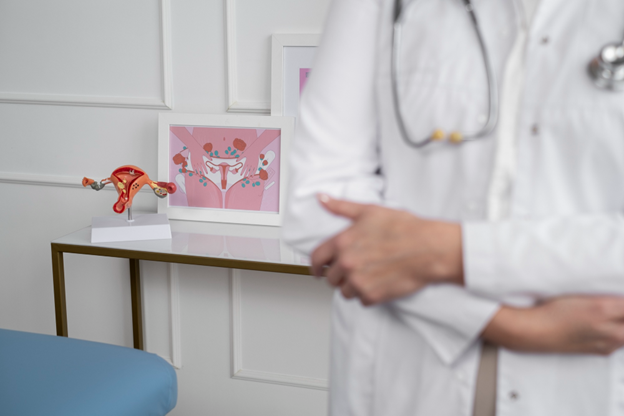Understanding the signs of ovarian torsion symptoms is crucial because timely treatment can prevent serious complications. Signs of a twisted ovary are often overlooked due to the lack of awareness, causing delays in seeking medical help. Early detection plays a pivotal role in ensuring minimal damage and a higher chance of preserving ovary function.
Understanding the Female Reproductive Anatomy
The female reproductive system is a complex structure composed of different organs. Among these are the ovaries, which are small, almond-shaped bodies located in the pelvis. They have two main functions: releasing eggs necessary for reproduction and producing hormones, such as estrogen and progesterone, that regulate the menstrual cycle and maintain various functions in the body.
Diagrams of the female reproductive system show the ovaries nestled on each side of the uterus, connected by ligaments. Understanding where and how these organs are placed within the pelvis is crucial. It helps in identifying potential problems, such as twisted ovary symptoms.
Sometimes, the anatomy can present risks. When an ovary twists, cutting off its blood supply, it’s called ovarian torsion. Knowing the exact position of these organs helps us understand why quick intervention is crucial.
What is Ovarian Torsion?
Ovarian torsion refers to the twisting of an ovary. This condition can cut off the ovary’s blood supply, causing intense pain and further complications. A related term often mentioned alongside is adnexal torsion symptoms, which involve not just the ovary but other tissues in the pelvic region as well.
This condition is more likely to affect women who have ovarian cysts. Young women are also at a higher risk due to the greater likelihood of cyst formation during the reproductive years. Immediate medical attention is vital for twisted ovary symptoms because delaying treatments can lead to tissue death and loss of the ovary. Understanding the seriousness of this condition helps in recognizing the urgency for medical care.
Primary Symptoms of Ovarian Torsion
The ovarian torsion clinical presentation often includes sudden, severe abdominal or pelvic pain. This pain can start abruptly and become unbearable quite fast. The nature of the pain is often described as sharp or stabbing, sometimes coming and going, but generally persistent.
These intense ovarian torsion symptoms during period can disrupt daily life activities, making it hard to move or even sit comfortably. The pain may increase during physical activities or could arise unexpectedly. Awareness of ovarian torsion signs helps in identifying when the pain is more than just routine discomfort.
- Sudden pelvic pain
- Sharp, consistent pain that disrupts activities
- Pain that worsens with movement
Secondary Symptoms to Watch For
Sometimes, early ovary twisted symptoms include nausea and vomiting. These reactions are common as the body responds to the severe pain and discomfort. Abdominal swelling or bloating may also be present. Another signal is experiencing fever or unusual vaginal bleeding.
These secondary signs of a twisted ovary suggest that tissue damage might be occurring, emphasizing the need for swift medical evaluation.
- Nausea and vomiting
- Abdominal swelling
- Fever
- Vaginal bleeding
When to Seek Emergency Medical Care
Knowing when to seek emergency care can be life-saving. If the ovarian torsion symptoms are sudden, severe, and don’t ease with typical pain relief measures, it’s time to act quickly. Be sure to communicate your symptoms clearly to medical professionals.
Timing is everything. Early intervention plays a crucial role in preserving the ovary function. It’s important to ignore any myths, such as “it’s just menstrual pain,” which can delay getting the help that is needed.
Diagnosing Ovarian Torsion: The Process
Diagnosing ovarian torsion begins with an assessment of symptoms and a physical examination. Doctors typically use ultrasound to confirm the condition, as it helps visualize the presence of a twisted ovarian cyst or the ovary itself.
In some places like India, access to diagnostic tools might vary, but globally, the approach is generally consistent. Early detection of adnexal torsion symptoms can prevent extensive damage.
- Initial symptom assessment
- Physical exams
- Ultrasound for confirmation
Treatment Approaches and Recovery
The primary treatment for ovarian torsion symptoms involves surgical intervention, often through laparoscopy or laparotomy. The main goal of these procedures is to untwist the ovary and restore its blood flow.
Recovery from these surgeries varies but generally includes pain management and a gradual return to normal activities. Understanding the treatment and expected recovery stages helps ease the journey.
- Laparoscopy or laparotomy surgeries
- Restoration of blood flow
- Pain management and recovery planning
Debunking Myths and Misconceptions
It’s common for misconceptions to surround ovarian torsion symptoms and related issues. Sometimes ovarian pain is brushed off or misunderstood. It’s crucial to differentiate true symptoms from false beliefs that might cause misinformation and hesitation in seeking treatment. Encouraging awareness and better decision-making can lead to healthier outcomes for many.
The Importance of Timely Medical Attention
To recap, when ovary twisted symptoms emerge, it’s essential to seek medical help without delay. Quick intervention can prevent severe damage and help preserve fertility. It’s also important to push past cultural barriers and stereotypes that may discourage seeking immediate care. Early action is your best defense against complications.

